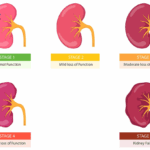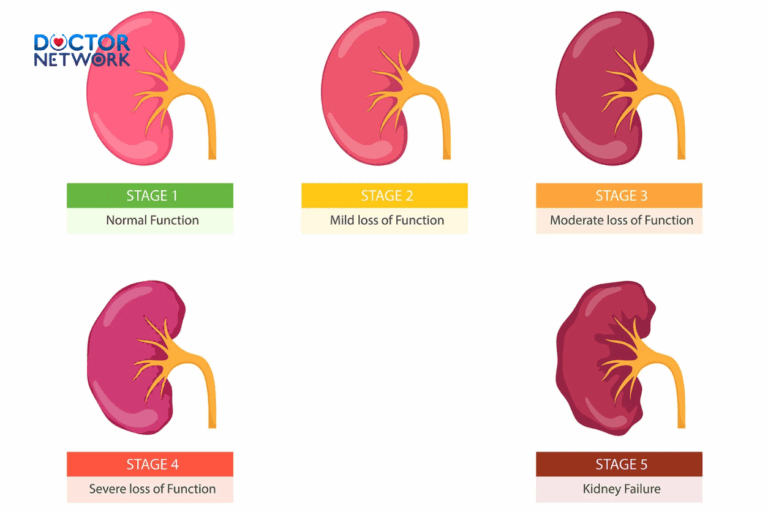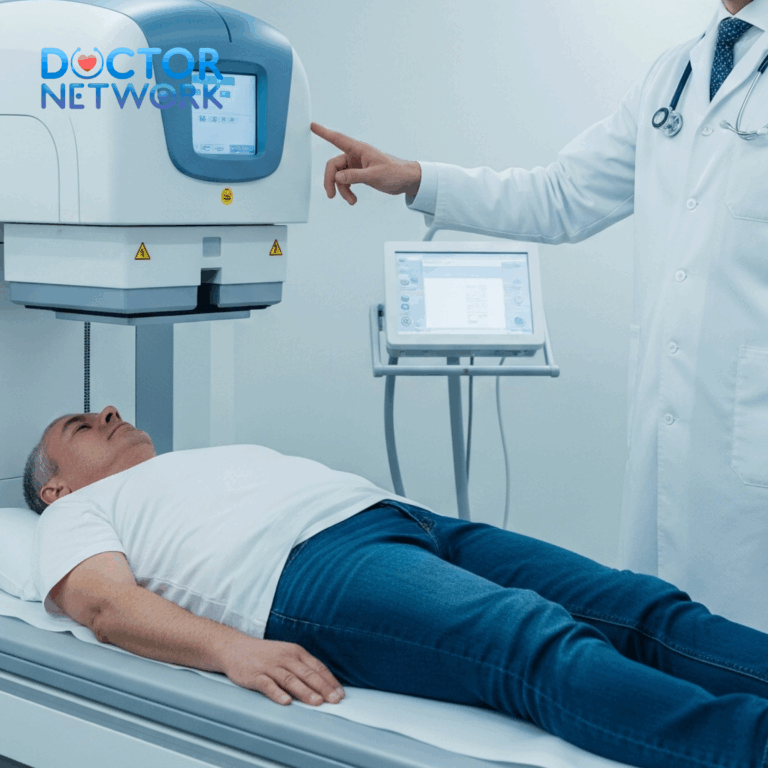Do You Need to Rest After a Cortisone Injection? Cortisone injections represent one of the fastest and most effective methods for alleviating joint pain, inflammation, and musculoskeletal discomfort. This powerful anti-inflammatory medication works by reducing swelling around joints, tendons, and soft tissues, providing significant pain relief and improved mobility for millions of patients worldwide. However, the critical question many patients face after receiving their injection is whether rest is necessary for optimal recovery and treatment success.

Rest after cortisone injection is absolutely essential for maximizing therapeutic benefits and minimizing potential adverse effects. The recovery period allows the corticosteroid medication to concentrate at the injection site, reduces systemic absorption, and prevents unnecessary stress on treated tissues. This comprehensive guide explores the science behind post-injection rest, provides specific activity recommendations for different injection sites, and outlines evidence-based recovery protocols that ensure optimal treatment outcomes.
Throughout this article, we’ll examine the fundamental mechanisms of cortisone therapy, detailed rest recommendations for various joint locations, potential side effects and management strategies, long-term efficacy considerations, and patient-centered care approaches. Understanding these critical aspects empowers patients to make informed decisions about their recovery process and achieve the best possible results from their cortisone injection therapy.
I. Understanding Cortisone Injections
A. What is Cortisone?
Cortisone is the common term for corticosteroid medications, which are synthetic versions of naturally occurring hormones produced by the adrenal cortex. These therapeutic agents should not be confused with anabolic steroids used illegally by athletes for performance enhancement. Medical corticosteroids serve entirely different purposes and mechanisms of action.
The mechanism of action involves potent anti-inflammatory properties that work by suppressing immune system responses at the injection site. Cortisone reduces swelling, inflammation, and pain by inhibiting the production of inflammatory mediators such as prostaglandins, leukotrienes, and cytokines. This targeted approach allows for localized treatment with minimal systemic effects when administered correctly.
Corticosteroids also stabilize cell membranes, reduce vascular permeability, and decrease the migration of inflammatory cells to affected tissues. These multiple pathways of action make cortisone injections particularly effective for treating various inflammatory conditions affecting joints, tendons, and surrounding soft tissues.
B. Conditions Treated with Cortisone Injections
Joint pain conditions that respond well to cortisone therapy include:
- Arthritis (osteoarthritis, rheumatoid arthritis, psoriatic arthritis)
- Tendonitis (tennis elbow, golfer’s elbow, Achilles tendonitis)
- Bursitis (shoulder, hip, elbow, knee bursitis)
Spinal-related pain conditions effectively treated include:
- Sciatica and lumbar radiculopathy
- Spinal degeneration and facet joint syndrome
- Herniated discs and disc-related pain
- Spinal stenosis and nerve compression syndromes
Additional conditions benefiting from cortisone injections encompass:
- Frozen shoulder (adhesive capsulitis)
- Nerve compression syndromes (carpal tunnel syndrome, tarsal tunnel syndrome)
- Morton’s neuroma and foot neuromas
- Ganglion cysts and synovial cysts
- Dupuytren’s contracture in early stages
The primary benefits include localized pain reduction, improved range of motion, enhanced participation in physical therapy, and restoration of functional activities. These improvements often allow patients to engage more effectively in rehabilitation programs and return to normal daily activities.
C. Cortisone Injection Procedure
Pre-injection preparation involves thorough skin sterilization using antiseptic solutions such as chlorhexidine or povidone-iodine. Patients should inform their healthcare provider about medical history, allergies, current medications, and any concerns about the procedure.
Injection technique utilizes precise needle guidance into the target area using advanced imaging technologies. Ultrasound guidance provides real-time visualization of anatomical structures, ensuring accurate medication placement. CT-guided injections offer exceptional precision for deeper structures and complex anatomical locations. These imaging modalities significantly improve treatment accuracy while reducing potential complications.
Discomfort levels during injection are typically minimal due to small needle gauges and local anesthetic agents mixed with the corticosteroid. Factors that may increase discomfort include severe inflammation at the injection site, extensive pain prior to treatment, multiple needle repositioning requirements, or patient anxiety and needle phobia.
Patient autonomy and informed consent processes ensure that injection decisions are carefully considered by referring physicians based on clinical signs, symptoms, and medical history. Patients receive comprehensive information about potential benefits and risks before providing consent for the procedure.
II. Importance of Rest After Cortisone Injection
A. General Rest Recommendations
Minimum rest period of 24-48 hours following cortisone injection is universally recommended by pain management specialists and orthopedic physicians. This initial rest phase allows the medication to begin its therapeutic action without interference from physical stress or excessive joint loading.
After the first 48-72 hours, patients can gradually increase activity levels based on symptom response and physician guidance. Joint-specific rest for the affected area should continue for at least 7 days, with modifications based on individual response to treatment and advice from physical therapy professionals.
The duration and intensity of rest requirements vary significantly based on injection location, patient health status, activity level, and specific diagnosis. Healthcare providers typically provide personalized activity modification guidelines tailored to each patient’s unique circumstances.
B. Scientific Rationale for Post-Injection Rest
Medication efficacy optimization occurs when cortisone remains concentrated at the injection site without dilution or displacement from excessive movement. Rest allows the corticosteroid to bind to target tissues and begin the complex process of inflammation reduction.
Prevention of systemic absorption represents a critical benefit of post-injection rest. When patients avoid vigorous activity, the cortisone stays localized to the treatment area rather than being absorbed into systemic circulation. This localization maximizes therapeutic benefits while minimizing potential systemic side effects.
Cartilage protection is enhanced through rest periods that reduce the risk of chondrotoxicity, a potential adverse effect where corticosteroids may temporarily affect cartilage cell metabolism. Limiting mechanical stress during the initial treatment period helps protect these vital joint structures.
Pain and swelling management becomes more effective when patients allow their bodies to respond naturally to the anti-inflammatory medication. Rest facilitates the body’s healing processes and prevents exacerbation of existing inflammation.
Inflammation reduction efficacy reaches optimal levels when cortisone can work without competing against ongoing mechanical stress or inflammatory stimuli from excessive activity.
C. Factors Influencing Rest Duration
| Factor | Impact on Rest Duration | Considerations |
|---|---|---|
| Specific diagnosis | High | Acute conditions may require longer rest |
| Steroid type and dosage | Moderate | Higher doses may need extended rest |
| Pre-injection fitness level | Moderate | Fitter patients may resume activity sooner |
| Pain and irritation severity | High | More severe symptoms require longer rest |
| Previous steroid flare experience | High | History of flares necessitates careful monitoring |
| Overall health and age | Moderate | Older patients may need modified approaches |
III. Specific Activity Guidelines After Injection
A. Daily Living Activities
Driving safety should be the primary consideration when determining readiness to operate a vehicle. Patients should only drive when they feel clinically safe, without drowsiness, numbness, or weakness that could impair reaction times. Having a companion accompany patients to injection appointments is strongly recommended.
Work considerations often involve taking 1-2 days off, particularly for physically demanding occupations. Office workers may return sooner with modifications, while manual laborers typically require extended time off to prevent re-injury or treatment interference.
Walking activities are generally safe for short distances immediately after injection. For lower extremity injections (knee, hip, ankle), patients should limit walking distance and pace during the first few days. Gradual progression based on comfort levels is appropriate.
B. Return to Exercise and Sports
Gym activities can typically resume after 3-5 days following general guidelines. The recommended approach involves:
- Initial focus on unaffected muscle groups and joints
- Gradual incorporation of exercises involving the injected area
- 24-hour monitoring after each workout session for pain response
- Progressive loading based on symptom tolerance
Running and sports-specific activities require more careful consideration:
Lower extremity injections (hip, knee, ankle/foot):
- Minimum 5-7 days rest from running activities
- Extended rest periods for patients who haven’t run for months due to pain
- Gradual return-to-running programs supervised by physical therapists
- Alternative activities include cross-training, walking, or swimming
Upper extremity injections:
- Return to running possible after 48 hours
- Exception: presence of steroid flare requires extended rest
- Arm and shoulder movements should remain limited during running
C. Joint-Specific Rest Recommendations
| Joint Location | Initial Rest Period | Activity Modifications | Special Considerations |
|---|---|---|---|
| Knee | 24-48 hours | Light walking only | Avoid stairs, squatting, kneeling |
| Shoulder | 7 days | Normal walking permitted | No lifting, overhead activities |
| Hip | 7 days | All activities restricted | May require assistive devices |
| Foot/Ankle | 24-48 hours | Limited standing/walking | Proper footwear essential |
| Elbow | 48-72 hours | Light activities only | Avoid gripping, lifting |
| Wrist | 48-72 hours | Minimize hand use | Splinting may be helpful |
Knee injection recovery allows for gentle walking after the initial 48-hour period, with gradual return to normal activities based on pain response and swelling levels.
Shoulder injection protocols permit normal walking immediately but restrict lifting, carrying, and overhead movements for at least one week to prevent medication displacement.
Hip injection guidelines are the most restrictive, often requiring limitation of all weight-bearing activities for up to one week or until physical therapy evaluation.
Foot and ankle injections benefit from minimal walking and standing during the first 24-48 hours, followed by gradual increase in weight-bearing activities.
IV. Potential Side Effects and Management
A. Common Side Effects
Mild local pain increase affects approximately 25% of patients and typically lasts 24-48 hours. This reaction is considered normal and indicates that the injection process has triggered temporary local inflammation.
Steroid flare syndrome represents a short-term pain increase caused by the corticosteroid itself rather than the underlying condition. This unpredictable reaction occurs in a minority of patients and can last up to one week. No reliable predictors exist for identifying patients at risk.
Systemic symptoms may include:
- Heart palpitations or rapid heartbeat
- Facial flushing and warmth sensations
- Sleep disturbances and insomnia
- Mild mood changes or irritability
- Temporary energy fluctuations
These symptoms typically resolve within 24 hours and are more common with higher steroid doses or in sensitive individuals.
Local tissue effects can include:
- Localized bruising and discoloration
- Skin and subcutaneous fat atrophy (creating dimpling)
- Depigmentation (skin lightening) at injection sites
- Temporary skin thinning, especially on palms and soles
Temporary blood sugar elevation may occur in diabetic patients, typically lasting several days to one week. Blood glucose monitoring may require adjustment during this period.
B. Managing Post-Injection Discomfort
For mild pain increases or steroid flare management:
Conservative approaches include:
- Cold therapy application for 15-20 minutes several times daily
- Acetaminophen for pain relief (following package directions)
- Anti-inflammatory medications if not contraindicated
- Extended rest periods until pain subsides
When to seek medical attention:
- Pain persisting or worsening after 48 hours
- Signs of infection (fever, redness, warmth, discharge)
- Severe allergic reactions (rash, breathing difficulties)
- Concerns about treatment response or unexpected symptoms
Healthcare providers should be contacted promptly if pain continues beyond the expected timeframe, as this may indicate infection requiring immediate medical intervention.
C. Rare but Serious Complications
Allergic reactions to injection components (corticosteroid, local anesthetic, antiseptic solutions) are typically mild and self-limiting. Severe anaphylactic reactions are extremely rare but require emergency medical treatment.
Infection risk remains below 0.1% for properly performed injections but represents the most serious potential complication. Joint infections are particularly concerning and require immediate antibiotic treatment. Any pain persisting beyond 48 hours should be evaluated for possible infectious etiology.
Delayed tendon rupture can occur when corticosteroids are injected directly into tendon tissue, potentially weakening collagen fibers. This complication is rare when proper injection techniques and anatomical knowledge are employed.
Avascular necrosis (bone death) represents an extremely rare complication associated with intra-articular injections. While theoretical risk exists, definitive causal relationships remain unproven in medical literature.
Systemic corticosteroid effects (osteoporosis, weight gain, acne, diabetes complications) are associated with prolonged oral corticosteroid use over weeks to years. These effects do not occur with single or occasional corticosteroid injections due to significantly lower total medication exposure.
V. Long-term Efficacy and Considerations
A. Treatment Effectiveness and Duration
Cortisone injections typically require several days to begin demonstrating therapeutic effects, with most patients experiencing benefits within 1-2 weeks of treatment. Peak effectiveness occurs within the first two weeks, followed by gradual decline over the subsequent 6-8 weeks.
Duration of pain relief varies significantly among patients and conditions. Some individuals experience symptom resolution lasting months or years, while others may require repeat treatments. If no improvement occurs within one month, the injection is considered ineffective for that particular condition.
Factors influencing effectiveness include:
- Accuracy of diagnosis and injection placement
- Severity and chronicity of the underlying condition
- Patient age, overall health, and activity level
- Concurrent treatments and rehabilitation efforts
- Presence of structural joint damage
B. Injection Frequency Guidelines
The “Rule of Three” limits patients to no more than three injections into the same anatomical area within a 12-month period. This guideline helps prevent potential tissue damage and maintains treatment effectiveness.
More frequent injections may cause:
- Tissue softening and structural weakening
- Accelerated joint degeneration in some cases
- Diminishing returns in pain relief effectiveness
- Increased risk of local side effects
When three injections prove ineffective, healthcare providers should:
- Reevaluate the original diagnosis
- Consider alternative treatment modalities
- Investigate underlying structural problems
- Refer to appropriate specialists for additional evaluation
Exceptions to frequency limits may be considered when:
- Pain relief benefits clearly outweigh potential risks
- Alternative treatments have failed or are contraindicated
- Quality of life improvements are substantial
- Careful monitoring and follow-up are maintained
C. Long-term Outcomes and Follow-up
Pain reduction from cortisone injections often facilitates improved participation in rehabilitation programs, physical therapy, and functional restoration activities. This enhanced engagement can lead to better long-term outcomes and sustained improvements in quality of life.
Rehabilitation integration should include:
- Structured physical therapy programs
- Progressive strengthening exercises
- Range of motion restoration activities
- Functional movement training
- Pain management education
Ongoing monitoring involves regular follow-up appointments to assess treatment response, monitor for complications, and adjust therapeutic plans as needed. Healthcare providers track injection effectiveness, functional improvements, and any adverse effects to optimize long-term care strategies.
VI. Patient-Centered Care Considerations
A. Integration with Alternative Therapies
Cortisone injection represents one component of comprehensive pain management strategies. Alternative treatment options include:
- Anti-inflammatory medications (NSAIDs, COX-2 inhibitors)
- Physical therapy and manual therapy techniques
- Exercise therapy and movement rehabilitation
- Surgical interventions for structural problems
- Complementary approaches (acupuncture, massage therapy)
Comprehensive pain management plans integrate multiple modalities to address different aspects of the patient’s condition. Cortisone injections often serve as a “bridge therapy” that reduces pain sufficiently to allow participation in other therapeutic interventions.
B. Psychological Factors
Needle phobia and general anxiety can significantly impact the injection experience and recovery process. Healthcare providers should address these concerns through:
- Detailed explanation of procedures
- Relaxation techniques and breathing exercises
- Topical anesthetic options when appropriate
- Supportive communication throughout treatment
Chronic pain psychology affects patient expectations, treatment compliance, and overall outcomes. Addressing psychological aspects of pain management enhances treatment success and patient satisfaction.
C. Cost and Accessibility Considerations
Many patients choose private facilities to avoid lengthy waiting lists for cortisone injection procedures. Financial considerations include:
- Insurance coverage variations
- Out-of-pocket expenses for private treatment
- Cost-effectiveness compared to alternative therapies
- Long-term economic impact of pain management
Access to care issues may influence treatment decisions and outcomes. Healthcare providers should consider patient resources and circumstances when developing treatment recommendations.
D. Prevention Strategies
While cortisone injections address existing pain conditions, prevention of recurrence requires:
- Maintenance of physical activity and joint mobility
- Muscle strengthening programs targeting supporting structures
- Proper movement mechanics during daily activities
- Ergonomic modifications in work and home environments
- Weight management to reduce joint stress
Long-term joint health depends on addressing underlying risk factors and maintaining healthy lifestyle practices beyond the immediate treatment period.
Conclusion – Do You Need to Rest After a Cortisone Injection?
Proper rest following cortisone injection is the cornerstone of successful treatment outcomes, maximizing therapeutic benefits while minimizing potential risks and complications. The specific duration and intensity of rest requirements depend on multiple individual factors including injection location, patient health status, activity level, and treatment response.
Evidence-based recovery protocols demonstrate that strategic rest periods allow corticosteroids to achieve optimal concentration at treatment sites, reduce systemic absorption, and prevent premature medication displacement. Patients who follow appropriate post-injection guidelines consistently experience superior pain relief, functional improvement, and treatment satisfaction.
Individual variation in treatment response necessitates personalized approaches to post-injection care. Healthcare providers must consider each patient’s unique circumstances, medical history, and treatment goals when developing recovery recommendations. Close communication between patients and providers ensures optimal outcomes and rapid identification of any complications.
Integration with comprehensive care represents the most effective approach to long-term pain management success. Cortisone injections serve as valuable tools within broader treatment strategies that include physical therapy, exercise programs, lifestyle modifications, and ongoing medical management. Patients who engage actively in their recovery process and maintain open communication with their healthcare team achieve the best possible outcomes from their cortisone injection therapy.
The key to successful recovery lies in listening to your body, following medical advice carefully, and maintaining realistic expectations about treatment timelines and outcomes. With proper post-injection care and comprehensive pain management strategies, cortisone injections can provide significant relief and restore functional capacity for patients suffering from various musculoskeletal conditions.

The 5 most common questions about what causes autism during pregnancy, along with clear answers based on current research:
What causes autism during pregnancy?
Autism is believed to result from a complex interplay of genetic and environmental factors during fetal development. While no single cause is confirmed, genetics play a major role, and certain pregnancy-related complications or exposures may increase risk.Do pregnancy complications increase the risk of autism?
Yes, some complications such as gestational diabetes, preeclampsia (high blood pressure), and infections during pregnancy have been linked to a higher likelihood of autism in the child. However, these are risk factors, not direct causes.Can maternal infections during pregnancy cause autism?
Maternal infections, especially viral infections in the first trimester or bacterial infections in the second trimester, may modestly increase autism risk. The mother’s immune response to infection might be a key factor rather than the infection itself.How do genetics influence autism risk during pregnancy?
Autism tends to run in families, indicating a strong genetic component. Shared genetic variants between mother and child can influence susceptibility to autism, sometimes interacting with environmental factors during pregnancy.Study (Protective Factor): “Association of Maternal Use of Folic Acid and Multivitamin Supplements in the Periods Before and During Pregnancy With the Risk of Autism Spectrum Disorder in Offspring”
Authors: P. Suren, et al.
Source: Journal of the American Medical Association (JAMA), 2013.
Summary: This large Norwegian cohort study found that mothers who took folic acid supplements before and during early pregnancy had a lower risk of having a child with ASD.
Conclusion: Adequate folic acid is crucial for proper neural tube formation and early brain development, and it appears to have a protective effect against ASD.
Study: “Maternal metabolic conditions and risk for autism and other neurodevelopmental disorders”
Authors: P. Krakowiak, et al.
Source: Pediatrics, 2012.
Summary: This study found that maternal obesity and diabetes (both pre-existing and gestational) were associated with an increased risk of having a child with ASD and other developmental delays.
Conclusion: These conditions are associated with higher levels of inflammation and insulin dysregulation, which may negatively impact the fetal developmental environment.
Are environmental exposures during pregnancy linked to autism?
Some studies suggest that environmental factors like maternal diet, medications, air pollution, and exposure to pesticides might affect fetal brain development and increase autism risk. However, these links are still under investigation and not definitive.
References
1. Genetic Factors
Genetics are considered the most significant contributing factor to autism risk.
Study: “Genetic Heritability and Shared Environmental Factors Among Twin Pairs With Autism”
Authors: Joachim Hallmayer, et al.
Source: Archives of General Psychiatry (now JAMA Psychiatry), 2011.
Summary: This major twin study was one of the first to rigorously separate genetic and shared environmental influences. By studying identical and fraternal twins, the researchers estimated that genetic heritability accounts for a substantial portion of autism risk. However, they also found that shared prenatal environmental factors were more significant than previously thought, highlighting the interplay between genes and environment.
Conclusion: Autism has a very strong genetic component, but genetics alone do not explain all cases.
Evidence: Spontaneous (de novo) Mutations
Source: Large-scale genetic sequencing projects like the SPARK Consortium and studies published in journals like Nature, Cell, and Neuron.
Summary: A significant number of autism cases, particularly in families with no history of ASD, are linked to de novo mutations. These are genetic changes that appear for the first time in the child and are not inherited from the parents’ DNA. These mutations often occur in genes that are crucial for early brain development and synaptic communication.
Conclusion: Spontaneous genetic changes that happen in the egg, sperm, or during the earliest stages of embryonic development can increase the risk of autism.
2. Maternal Health and Immune System Factors
A growing body of evidence points to the maternal immune system’s state during pregnancy as a significant risk factor. This is known as the Maternal Immune Activation (MIA) theory.
Study: “Maternal Infection and Fever During Pregnancy and Autism Spectrum Disorder Risk: The Swedish Health Register”
Authors: H. O. Lee, et al.
Source: Molecular Psychiatry, 2020.
Summary: This large population-based study in Sweden analyzed data from over 500,000 children. It found that any maternal infection (bacterial or viral) diagnosed in a hospital setting during pregnancy was associated with an increased risk of having a child with ASD. The presence of a high fever, regardless of the cause, also increased the risk.
Conclusion: A strong inflammatory response in the mother during pregnancy can affect fetal brain development. The inflammatory proteins (cytokines) can cross the placenta and alter the trajectory of neural development.
Study: “Maternal autoimmune diseases, asthma and allergy, and risk of autism spectrum disorder: a systematic review and meta-analysis”
Authors: S. Chen, et al.
Source: Journal of Autism and Developmental Disorders, 2016.
Summary: This meta-analysis reviewed 11 different studies and found a consistent association between maternal autoimmune diseases (like lupus, rheumatoid arthritis, celiac disease) and an increased risk of ASD in their children.
Conclusion: A pre-existing, chronically activated immune system in the mother may create an inflammatory prenatal environment that increases the risk for ASD.
3. Exposure to Medications and Chemicals
Exposure to certain drugs during pregnancy has been linked to a higher risk of ASD.
Study: “Prenatal Valproate Exposure and Risk of Autism Spectrum Disorders and Childhood Autism”
Authors: J. Christensen, et al.
Source: Journal of the American Medical Association (JAMA), 2013.
Summary: This is the most established link between a medication and autism risk. This large Danish cohort study found that children exposed to the anti-seizure medication valproic acid (valproate) in the womb had a significantly higher absolute risk of developing ASD.
Conclusion: Valproic acid is a known human teratogen (an agent that can cause birth defects) and a powerful environmental risk factor for autism.
Note on SSRIs (Antidepressants): The link between prenatal exposure to SSRIs and autism is far more controversial and less clear. While some studies have shown a weak association, others have found none, suggesting the link may be confounded by the mother’s underlying depression or anxiety, which itself is a potential risk factor. This area remains under active investigation.
4. Environmental Pollutants
Study: “Autism Spectrum Disorder and Particulate Matter Air Pollution before, during, and after Pregnancy: A Nested Case-Control Analysis within the Nurses’ Health Study II Cohort”
Authors: A. Raz, et al.
Source: Environmental Health Perspectives, 2015.
Summary: This study (and others by researchers like Heather Volk) found that high levels of exposure to certain types of air pollution, specifically fine particulate matter (PM2.5), during the third trimester of pregnancy were associated with a greater risk of ASD.
Conclusion: Inhaled pollutants may trigger an inflammatory response in the mother, which, similar to the MIA theory, can affect the developing fetal brain.
Study: “Neurodevelopmental Disorders and Prenatal Residential Proximity to Agricultural Pesticides: The CHARGE Study”
Authors: J. F. Shelton, et al.
Source: Environmental Health Perspectives, 2014.
Summary: The CHARGE (Childhood Autism Risks from Genetics and the Environment) study from UC Davis found that mothers who lived within 1.5 kilometers of agricultural fields where certain pesticides (organophosphates and pyrethroids) were applied during their pregnancy had a higher chance of having a child with ASD.
Conclusion: Exposure to specific neurotoxic pesticides during critical windows of brain development is a significant environmental risk factor.
5. Maternal Nutrition and Metabolic Conditions
Study (Protective Factor): “Association of Maternal Use of Folic Acid and Multivitamin Supplements in the Periods Before and During Pregnancy With the Risk of Autism Spectrum Disorder in Offspring”
Authors: P. Suren, et al.
Source: Journal of the American Medical Association (JAMA), 2013.
Summary: This large Norwegian cohort study found that mothers who took folic acid supplements before and during early pregnancy had a lower risk of having a child with ASD.
Conclusion: Adequate folic acid is crucial for proper neural tube formation and early brain development, and it appears to have a protective effect against ASD.
Study: “Maternal metabolic conditions and risk for autism and other neurodevelopmental disorders”
Authors: P. Krakowiak, et al.
Source: Pediatrics, 2012.
Summary: This study found that maternal obesity and diabetes (both pre-existing and gestational) were associated with an increased risk of having a child with ASD and other developmental delays.
Conclusion: These conditions are associated with higher levels of inflammation and insulin dysregulation, which may negatively impact the fetal developmental environment.
Kiểm Duyệt Nội Dung
More than 10 years of marketing communications experience in the medical and health field.
Successfully deployed marketing communication activities, content development and social networking channels for hospital partners, clinics, doctors and medical professionals across the country.
More than 6 years of experience in organizing and producing leading prestigious medical programs in Vietnam, in collaboration with Ho Chi Minh City Television (HTV). Typical programs include Nhật Ký Blouse Trắng, Bác Sĩ Nói Gì, Alo Bác Sĩ Nghe, Nhật Ký Hạnh Phúc, Vui Khỏe Cùng Con, Bác Sỹ Mẹ, v.v.
Comprehensive cooperation with hundreds of hospitals and clinics, thousands of doctors and medical experts to join hands in building a medical content and service platform on the Doctor Network application.

























